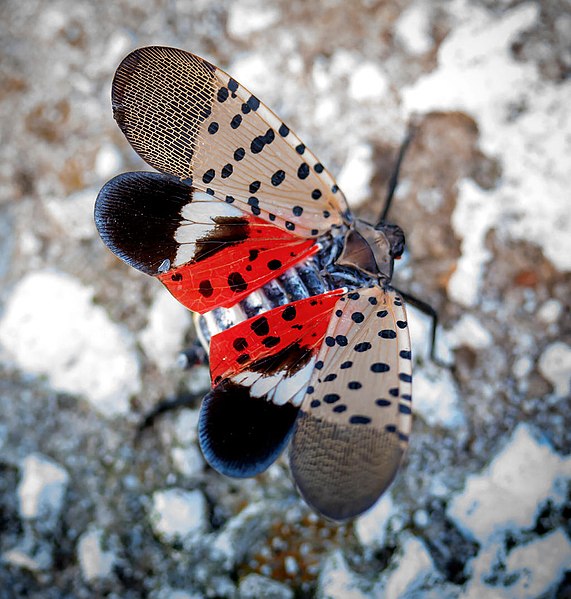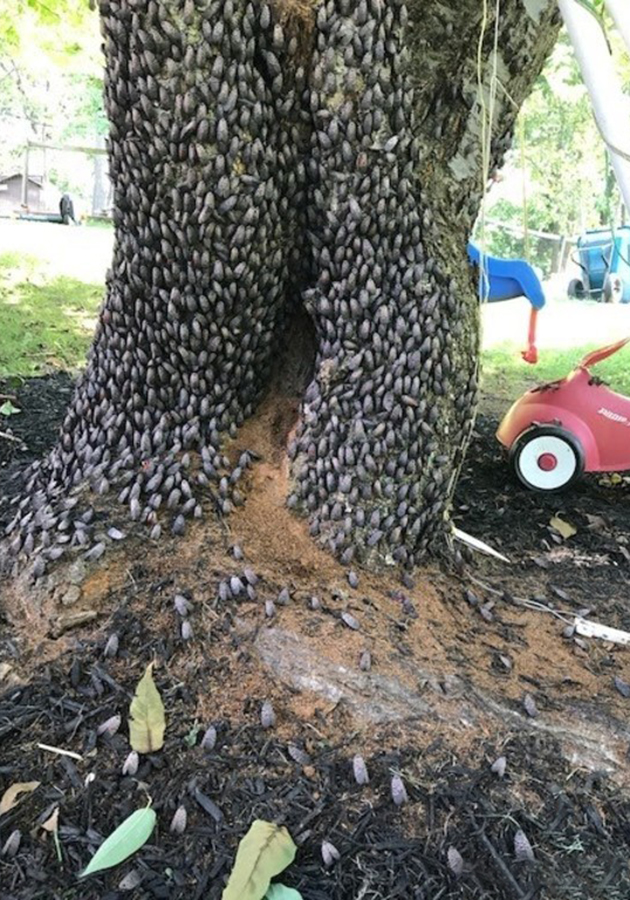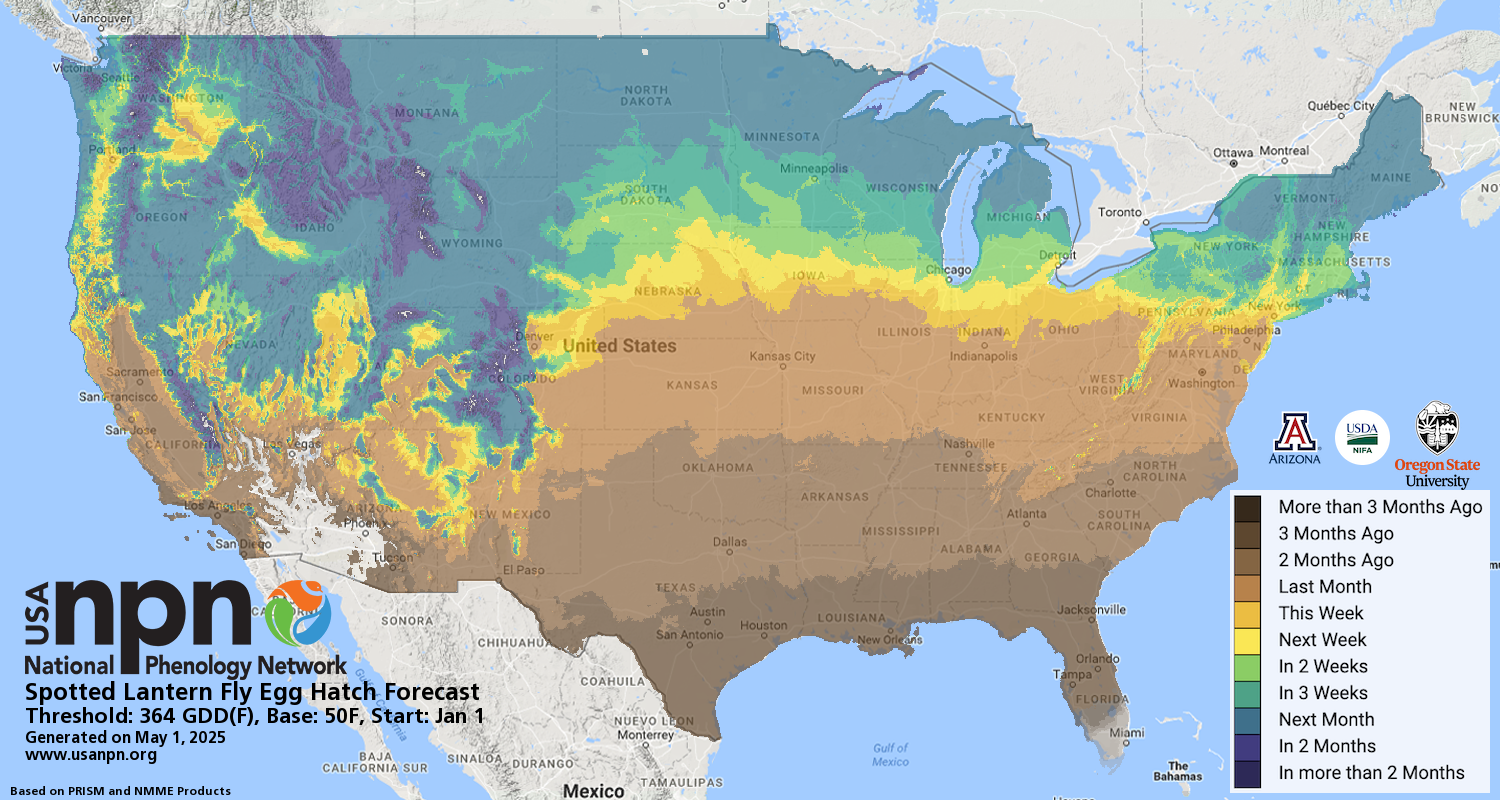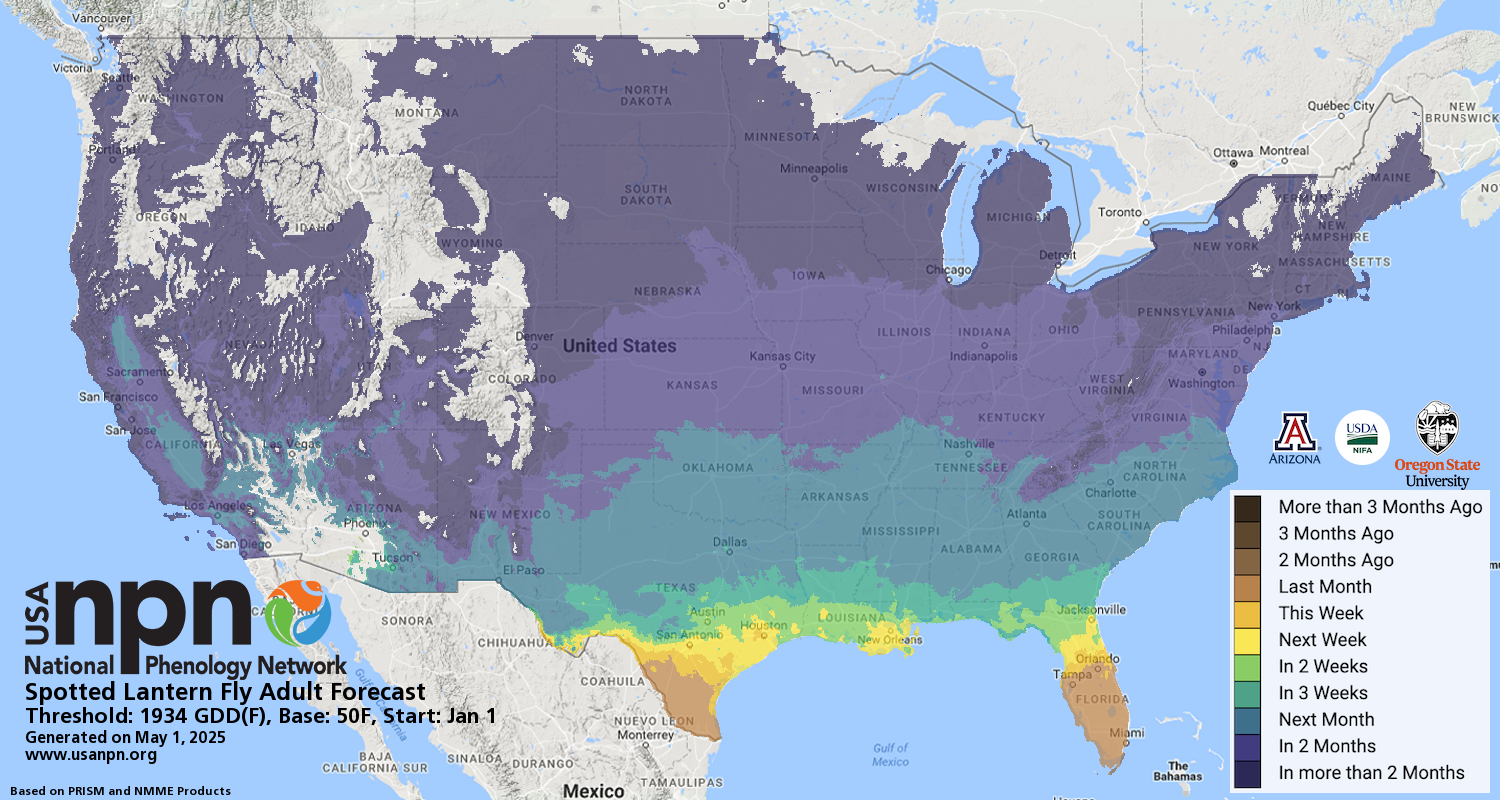The spotted lanternfly is an invasive planthopper that threatens several major agriculture crops in the U.S. including grape, orchard, stone fruit, and hops.
Spotted lanternfly damages plants by sucking sap from trunks, stems, and branches as well as by depositing a sticky residue that leads to mold growth. This damage weakens the plant, which reduces yields and makes the plant more susceptible to stressors such as extreme cold and other pests.
WHAT ARE PHENO FORECASTS?
Pheno Forecast maps predict key life cycle stages in invasive and pest species, to improve management efficacy. For insect pest species, Pheno Forecasts are based on published growing degree day (GDD) thresholds for key points in species life cycles. These key points typically represent life cycle stages when management actions are most effective. For spotted lanternfly, we forecast egg hatch and the first emergence of adults, for the full calendar year.
Watch a video on how to use the SLF Pheno Forecast.
Help us improve these maps! Our Pheno Forecast map products are still in development, and we seek input on their performance in your area. Give your feedback at the bottom of the page.
SIGN UP FOR PHENO FORECAST NOTIFICATIONS!
Sign up to be notified by email approximately two weeks and again six days ahead of key growing degree day thresholds for species of interest at your location

Spotted lanternfly (Lycorma deliculata; SLF) feeds on many types of fruit trees including apples, cherries and peaches; nut trees including walnut and butternut; and hardwood trees including maple, oak and willow. SLF often feed in swarms of hundreds or thousands of insects and excrete a sticky substance, honeydew, when feeding. This sugary waste product facilitates the growth of sooty mold that further weakens plants and the forest understory. Several U.S. states have quarantine areas in place to help prevent SLF’s spread.
LEARN HOW TO OBSERVE PHENOLOGY OF SLF
Our learning module walks you through how to identify SLF, how to report its life cycle events, and why you should care.

Forecasts of egg hatch and appearance of adults for SLF are based on growing degree days, which are heat units used to measure development of plants and insects. The forecasts are available for the contiguous United States, except for those areas where the temperatures for the current year are expected to be either too extreme for SLF to survive or too cold for a life cycle event to occur. Forecasts may help to detect insects and slow the spread of SLF to new locations. Forecasts of egg hatch provide insight into when nymphs will appear, which may help detect SLF before it can spread to additional locations. Forecasts for adults may help time treatments that are applied to control adults on infested trees, which may also reduce the spread of the pest.
Overwintering egg masses can be scraped off and destroyed before eggs hatch. For specific information on preferred treatment options in your region, we recommend contacting your local extension agent. For more information on treatment guidance, visit PennState Extension’s Spotted Lanternfly Management Guide.
EXPLORE THIS FORECAST
Learn more about this forecast using our visualization tool!
|
Phenophase |
GDD threshold |
Base temp |
Upper threshold |
Start date |
GDD method |
Model origin |
Source |
|---|---|---|---|---|---|---|---|
|
Egg Hatch (earliest date that overwintering eggs are predicted to hatch as nymphs) |
364oF |
50oF |
95oF |
Jan 1 |
Single triangle |
PA, VA |
DDRP, Barker et al. 2025 |
|
Adult Emergence (earliest date that nymphs emerge as adults) |
1934oF |
50oF |
95oF |
Jan 1 |
Single triangle |
PA, VA |
The development of this forecast was funded primarily by USDA NIFA AFRI Tactical Sciences for Agricultural Biosecurity Award #2022-68013-37138.
More information on map development and re-use policy.

